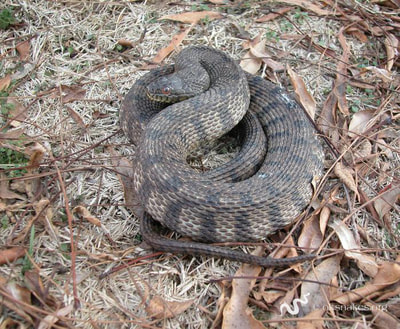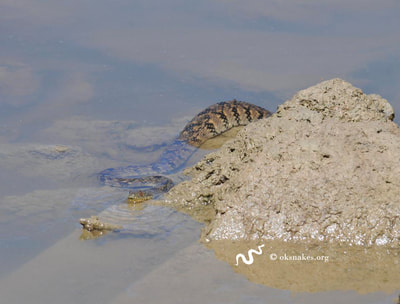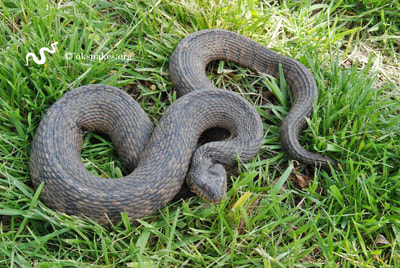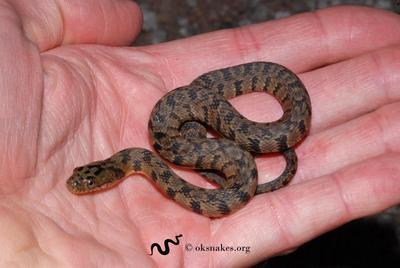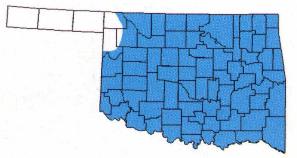Diamond-backed watersnake
Nerodia rhombifer
Nerodia rhombifer
HARMLESS
Description:
A greenish-brown snake with a diamond-like pattern on its back and dark bars on the sides of its body. The belly scales are yellow with dark markings on the sides. Males are smaller and thinner than females and they have small bumps on their chin. Scales are heavily keeled and the anal plate is divided.
Size:
Adults 30 - 48 inches (76 - 122 cm)
Prey:
Fish and frogs.
Reproduction:
Mates in spring and gives birth to 12 - 50 babies in late summer.
Habitat:
Ponds, lakes, streams, rivers, wetland areas, and virtually any permanent bodies of water.
Other Information:
Often confused with the venomous cottonmouth, this harmless snake is commonly seen basking on logs and rocks near water. When threatened it may emit a foul-smelling musk or even attempt to bite.
Why doesn't the range map show this species in my county?
Description:
A greenish-brown snake with a diamond-like pattern on its back and dark bars on the sides of its body. The belly scales are yellow with dark markings on the sides. Males are smaller and thinner than females and they have small bumps on their chin. Scales are heavily keeled and the anal plate is divided.
Size:
Adults 30 - 48 inches (76 - 122 cm)
Prey:
Fish and frogs.
Reproduction:
Mates in spring and gives birth to 12 - 50 babies in late summer.
Habitat:
Ponds, lakes, streams, rivers, wetland areas, and virtually any permanent bodies of water.
Other Information:
Often confused with the venomous cottonmouth, this harmless snake is commonly seen basking on logs and rocks near water. When threatened it may emit a foul-smelling musk or even attempt to bite.
Why doesn't the range map show this species in my county?
